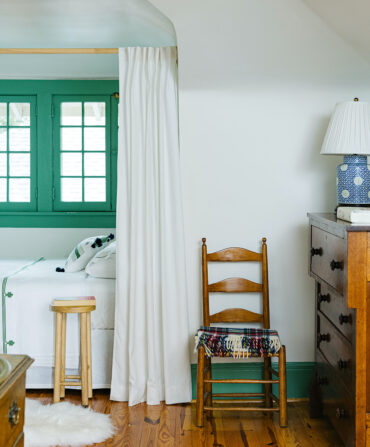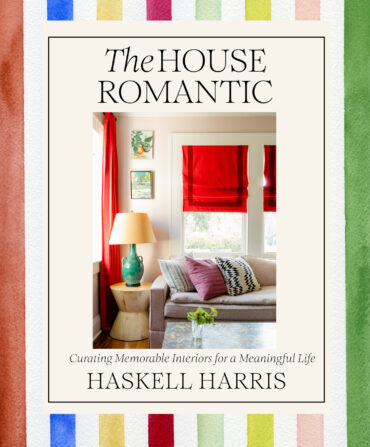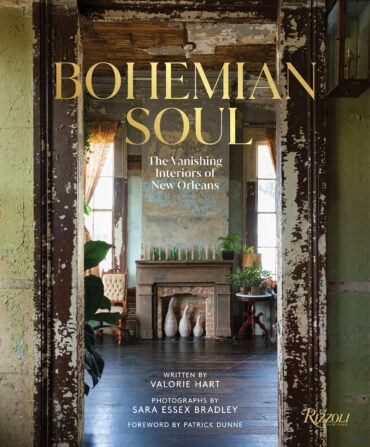Gardens
Beth Macy Gardens Her Way Home
For decades, the Virginia journalist Beth Macy has chronicled some of the toughest true stories in Appalachia. To see the world and her writing from a new perch, she need only step into her yard

Illustration: Jason Holley
“Remember, you’re no spring chicken,” she said. Eighty-one at the time, she was one to talk.
I had just soared over the handle-bars of my mountain bike, landing so hard in the dirt that I pulverized several bones in my left hand. Those bones turned out to be critical tools in the act of typing, which is how I earn my living as a writer.
It was July of 2008, one of the crappiest years on record, and not just for the stock market. I’d recently been wait-listed for a journalism opportunity I’d long coveted, the Nieman Fellowship at Harvard, followed by another rejection for a tenure-track teaching job. In between, summer pneumonia sent me to bed for a week with a fever so high I passed out.
I was forty-four then, and despite all the setbacks, I mostly still felt like a spring chicken. So my mother’s comment raised my hackles, as only a mother’s scolding can.
I was my parents’ midlife “accident,” the youngest by far of their four kids. I was so different from the rest of my family, my mother told me once, half joking, that I might have arrived from a distant planet. While we loved each other deeply, my mom and I had an unspoken agreement to heed Ben Franklin’s adage for visitors: “Guests, like fish, begin to smell after three days.” After seventy-two hours, we got on each other’s nerves about most things.
Exercise, for example. Mom had never seen the point of riding bikes when you had a perfectly serviceable car sitting in the driveway. She hated my fashion sense—she considered it more hobo than boho. Other than beer and chocolate, the only thing we agreed on consistently was flowers. The more, the better, in our opinion. When I was growing up, my favorite day was May 30, not because it was my birthday but because it usually coincided with the holiday that my family called Decoration Day, a precursor to Memorial Day, when every female Macy within a day’s drive was expected to come plant flowers and spruce up the urns at our ancestors’ graves.
The day of my hand surgery, I returned home to find a vibrant blue potted hydrangea Mom had had delivered to our front porch. The next day, she drove from Ohio to my home in Roanoke, Virginia, to take care of me and help with the kids. She fried her signature chicken, their favorite. She cleaned the house and did the laundry, carefully folding our underwear into tiny little squares that looked like presents—she was a Midwestern Marie Kondo before Kondo was even a thing.
To keep my cast dry, Mom washed my hair in the laundry room sink. It had been decades since I’d felt so tenderly mothered. She stayed a week and returned home without conflict or drama—a first.
After she left, I planted the hydrangea next to my front-porch steps, where its Frida Kahlo–blue blossoms still elicit compliments from passersby. When it more than quadrupled in size, I painted the metal glider nearby the same shade of blue.
Mom’s hydrangea became the centerpiece of my front yard, and in time, it would mean so much more.

Illustration: Jason Holley
Okay, so it turns out that Mom was right about my cycling prowess. Soon after the fall, I gave up mountain biking for smoother, safer greenway riding, entering the long and awkward transition between spring chicken and geriatric fowl. The next year I nailed the long-coveted fellowship, a stepping-stone to a new career in which I came to work for the toughest boss of all (gulp): myself.
In 2014, I quit my longtime Virginia newspaper job to write books about the plight of the rural South—about the legacy of Jim Crow, the aftermath of jobs lost to globalization, and the consequences of a grand pharmaceutical swindling that kick-started an overdose crisis and wound up killing more than a million Americans.
When my third book, Dopesick: Dealers, Doctors, and the Drug Company That Addicted America, came out in 2018, my doctor took one look at my soaring blood pressure and suggested that my reporting was exposing me to too much secondary trauma, maybe even causing PTSD. He suggested yoga and meditation, and writing about happier things.
But I was already a yoga devotee, and I’m way too type A to meditate. When my friend Sue reframed the doctor’s prescription in language I could get behind, something clicked.
“You do meditate,” she insisted. “Gardening is your meditation.”
I garden, in fact, a lot like I write. I hunt down interesting perennials with the same drive with which I chase an investigative interview or a great quote. I love nothing more than finding a new plant in a new place, like the Rosa banksiae vine I scored at a nursery near the Chesapeake Bay and hauled five hours to my home in the Blue Ridge Mountains.
Master gardeners and master writers alike may advise you to meticulously plot your design before digging in, but I tend to get my hands dirty first, then puzzle it into shape, one problem area at a time. It’s the tinkering part I like best.
I plant terrible first drafts, revising the work into an arrangement that I eventually find pleasing—then I go back to the beginning, and I tinker some more. If a plant or a paragraph is being particularly stubborn, I throw it in the compost heap.
I have learned that I’m at my healthiest when I start and end the day tending to my tiny quarter-acre city plot, even if I’m just taking a turn around the perimeter to note the changes taking shape. When I’m stuck on a chapter at my desk, I unplug and go outside—and often the solution to the problem comes to me when I’m sweaty, dirty, and thoroughly focused on puttering with my plants. It’s the physical act of working in the dirt, I’ve come to realize, that disconnects me from the grief of the stories I absorb, even if it’s just weeding and watering and then sitting back in my favorite yard-sale chair to stare at it all.
With writing and gardening alike, the process itself is its own reward, not prizes or plate-sized blooms. As the writer Brenda Ueland described it: “I learned that you should feel when writing, not like Lord Byron on a mountain top, but like a child stringing beads in kindergarten—happy, absorbed and quietly putting one bead on after another.”
Whether I’m tucking tomato seedlings into warm soil, pruning hydrangeas after the last bloom turns brown, or just pulling weeds, communing with my plants is my favorite form of self-care—a term that would have made my no-nonsense mom scoff.
After twenty-two years of tinkering in the same yard, I’ve transformed damn near all the grass surrounding our brick 1920s American Foursquare into perennial beds—it takes my husband roughly seven minutes to mow. I personally dug out enough dirt from a rear corner of the backyard for a 240-gallon fishpond, and created a hedge of oakleaf hydrangeas (my favorite harbinger of spring) as a cozy backdrop for a slate seating area. I usually dot the greenery in deep blues (salvia, Virginia bluebells) and white, then punctuate the scene with my favorite-ever yard-sale find: a crumbling concrete Buddha into whose cracks I tuck yet more plants.
Once, when the former owner of our house drove by, she did not like one bit that I’d dug up most of her front yard, adding Seuss-esque euphorbia, giant alliums, and rotating annuals in complementary colors to accent what more than one visitor has described as a “fairyland.” She found my changes tacky, phoning the neighbors to squawk, “Have you seen what she’s done to my yard?”
My garden cannot please everyone, but it pleases me, and the best gardens double as a conduit to our own pasts. When I deadhead the rudbeckias, their tall yellow flowers remind me of Marge, the retiree who gave them to me three decades ago. She lived three houses down from our first house, and like my mom, Marge referred to sedums as “live-forevers” and irises as “flags.” Marge herself had been given the rudbeckias by an older friend decades before, she explained, plopping them on my porch in plastic Kroger bags.
When I proved I could keep her first batch of babies alive, Marge rewarded me with a second set. This time it was asters, with instructions to lop them in half by mid-July lest they become leggy. “The more you share ’em, the better they grow,” she said.
Some people cart around their grandmother’s dishes from house to house. I carry around Marge’s perennials, which are tall and regal. They brighten the stand of lilacs I planted in homage to the secret garden of my youth—a cave-like bank of lilacs near the corner of my childhood home. There I would plant myself amid the bushes, and write down copious notes about passersby, just like the main character from Harriet the Spy, and dream of becoming a writer.
Part heirloom and part journal entry, our plants not only connect us to the earth; they connect us to younger versions of ourselves. My giant cedar reminds me that it’s okay to take a break. I carted it home in the back of our Subaru—a great vehicle for plant hauling—from what my gardener friends and I call our annual “plant hooky” excursions. One Friday in early spring, we take the day off and hit as many nurseries as we can.
That cedar now towers over our front yard, providing shade for Mom’s hydrangea and the background for all our family pictures, from the first day of kindergarten to the last day of college.
My smoke tree reminds me of Lynn, a brilliant newspaper copy editor I used to work with whose tongue was as sharp as her edits. Forced to retire after being diagnosed with early-onset dementia, Lynn could, for a time, still articulate what it felt like to lose your mind. It troubled her, she admitted to me, that she couldn’t remember whether her bra hooked in the front or the back. But when she spotted a smoke tree in an area nursery, she instantly recalled that I’d admired the one in her front yard and called me excitedly and told me where to buy it.
When that tree finally succumbed to a fungus summer before last, Lynn had been dead for nine years. I was sad when my husband cut it down, but I also knew that Lynn would have cheered the necessary edit. The next spring, volunteer smoke trees surprised me by sprouting up in the old one’s wake. When the white puffs of “smoke” return in late summer, I shake my head and remember feisty, fastidious Lynn.
Ten years before my mom died, my son snapped a Decoration Day photo of the two of us about to get our hands dirty. We were yukking it up behind Mom’s future headstone—the only thing missing on it was her death date—a ritual she jokingly referred to as the taking of her “ascension picture.” Her arms held skyward, she was wearing the HARVARD MOM sweatshirt I’d bought her during my fellowship that year.
When Mom died of vascular dementia at the age of ninety-three (in the pandemic’s first year), we masked up for her graveside service by the old Decoration Day urns. My sister handled the arrangements and encouraged each of us to take a sunflower from the funeral wreath.
We all grieve differently, I know, but it troubled me that when my relatives were crying their eyes out at the service, I wept not a single tear. I couldn’t stop thinking about Mom’s ascension. It felt wrong that she wasn’t here, of all places, with us—pinching petunias, toting her dented watering can, mugging for the camera. Even now, she was mothering me, protecting me, making me laugh.
The winter of her death, I carefully dried my sunflower on the kitchen windowsill. The following May, I teased out the seeds and planted them in a sunny spot not far from the blue hydrangea, which is still such a show-off. I’m just woo-woo enough that when the first sunflower bloomed, I envisioned Mom waving at us again. Mother Earth willing, I hope to keep the seed-to-sunflower cycle going until my spring chicken turns into a tough old bird.







